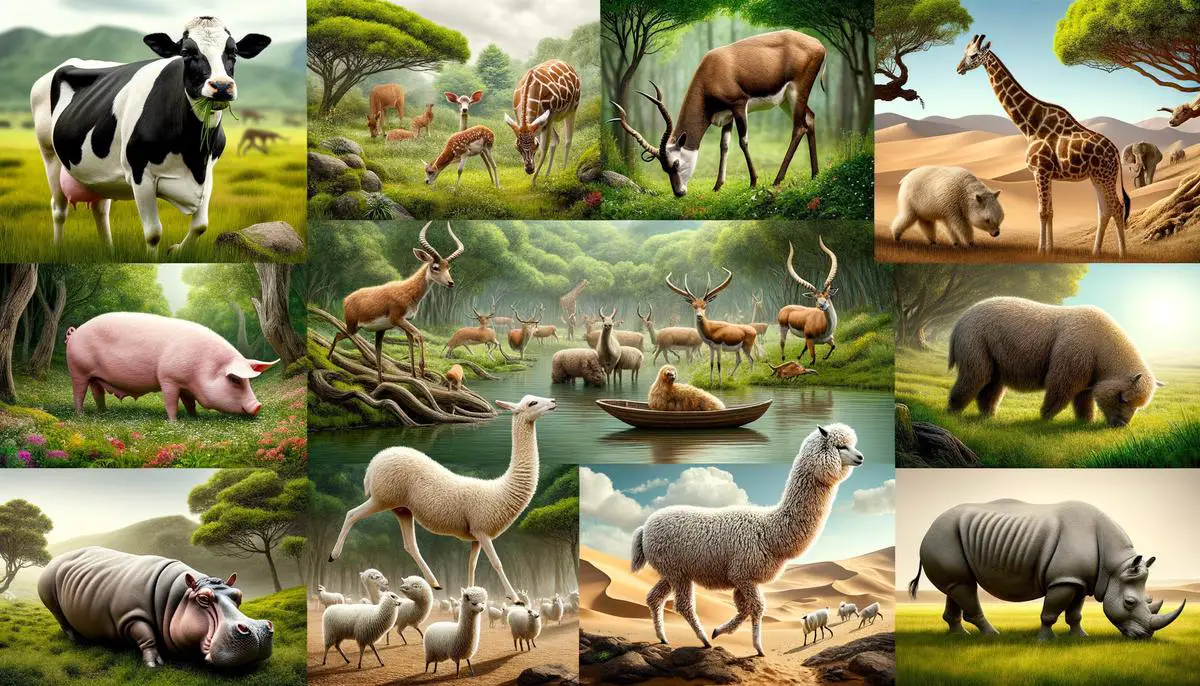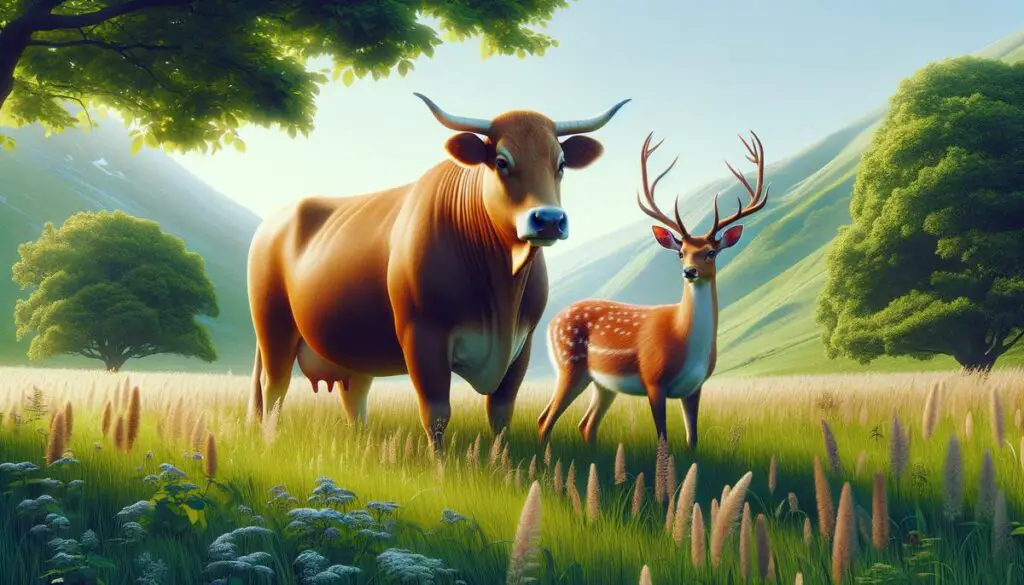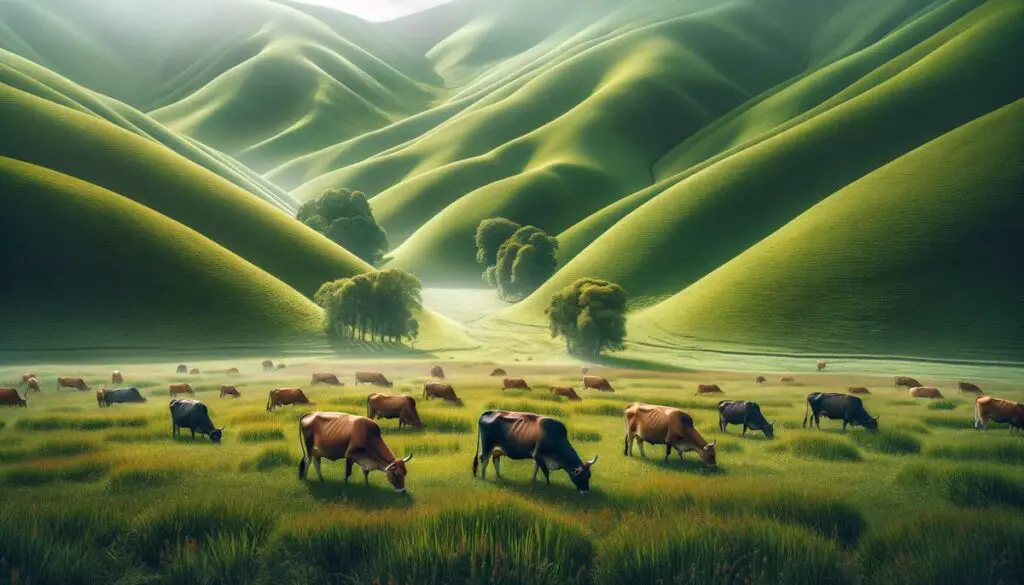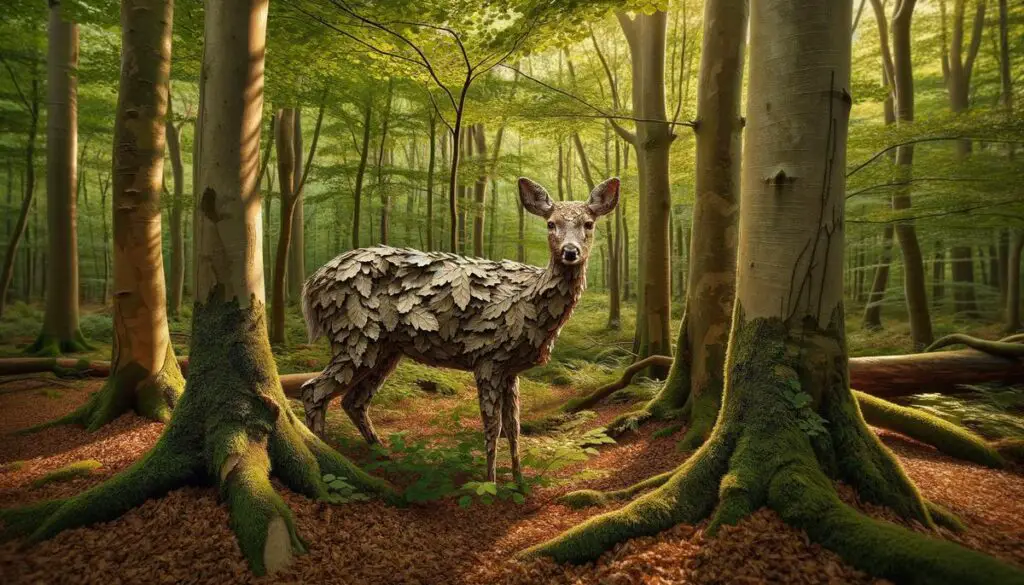10 Cloven-Footed Animals: Characteristics and Examples

In the animal kingdom, cloven-footed creatures stand out for their distinctive hoof structure. Also known as cleft hooves, divided hooves, or split hooves, these animals have feet divided into two main toes. This unique characteristic is a defining feature of the mammalian order Artiodactyla, which translates to “even-toed.” Unlike their odd-toed counterparts such as horses and rhinos, which have one or three toes on each foot, cloven-footed animals exhibit this fascinating bipartite arrangement.
Here are 10 examples of these remarkable creatures, each showcasing the beauty and diversity of the natural world.
| Animal | Key Features of Feet |
|---|---|
| Cow (Bos taurus) | Cloven hooves with dewclaws (small hooves above main toes) |
| Deer (Cervidae family) | Cloven hooves with padded soles for quiet movement |
| Pig (Sus scrofa) | Cloven hooves with two main toes and potentially rudimentary dewclaws |
| Antelope (Bovidae fam.) | Cloven hooves with adaptations for speed and varying terrain depending on species (e.g., pointed for rocky areas) |
| Goat (Capra hircus) | Cloven hooves with excellent grip for climbing |
| Sheep (Ovis aries) | Cloven hooves with padded soles for walking on uneven terrain |
| Camel (Camelus dromedarius) | Wide, two-toed hooves with flat soles adapted for sand |
| Giraffe (Giraffa camelopardalis) | Large, cloven hooves for support of their massive weight |
| Hippopotamus (Hippopotamus amphibius) | Broad, four-toed (partially webbed) feet for stability in water |
| Alpaca (Vicugna pacos) | Cloven hooves with soft pads for cushioning on rocky terrain |

What Animals Chew the Cud?
Cud-chewing animals, known as ruminants, are herbivores with a specialized digestive system that helps them extract maximum nutrients from plant material. Here’s a breakdown of their key features:
- Four-chambered stomach: Unlike most mammals, which have a single stomach, ruminants have a complex stomach with four chambers: rumen, reticulum, omasum, and abomasum.
- Microbial breakdown: The rumen, the largest chamber, contains microbes that break down tough plant fibers like cellulose into simpler molecules.
- Cud chewing: Ruminants regurgitate partially digested food from the rumen (cud) back into their mouth to chew it more thoroughly, allowing the microbes to further break it down. This process is called rumination.
- Benefits of rumination: Rumination helps these animals extract maximum nutrients from their food and survive on low-quality plant material like grass and leaves.
Examples of cud-chewing animals include cattle (cows, bulls, and oxen), sheep, goats, deer (including elk, caribou, and reindeer), antelopes, gazelles, giraffes, bison, yaks, water buffalo, and alpacas.
It’s important to note that not all cloven-footed animals are ruminants. Pigs, for example, have cloven hooves but don’t chew cud and have a simpler digestive system.
5 Cloven Footed Animals that Chew the Cud
According to Jewish dietary laws, animals that have both cloven hooves and chew their cud are considered kosher. Here are some examples of kosher animals:
- Cattle (including cows, bulls, and oxen)
- Sheep
- Goats
- Deer (including elk, caribou, and reindeer)
- Antelopes and gazelles
These animals all share two key characteristics:
- Cloven hooves: Their feet are divided into two main toes.
- Ruminant digestion: They have a four-chambered stomach and regurgitate partially digested food (cud) to chew it further and extract nutrients.

Cow
The cow, an emblem of rural landscapes and pastoral scenes, stands out as a quintessential example of a cloven-footed animal. Renowned for their distinctive split hooves, cows embody the characteristic features of this category with remarkable adaptations that speak to their evolutionary journey.
At the heart of their significance, cows play a pivotal role in ecosystems and human societies alike. These gentle giants contribute to agriculture through dairy and meat production, showcasing their versatile utility. Their hooves are specially designed for walking on diverse terrains, allowing them to traverse fields and pastures with ease, benefiting both natural environments and agricultural practices.
Moreover, the digestive system of a cow is a marvel of nature. Equipped with a four-chambered stomach, cows excel at converting grasses, which are often tough and fibrous, into vital nutrients. This not only illustrates their efficiency as grazers but also emphasizes their contribution to maintaining the health of grassland ecosystems. By recycling nutrients, they support the growth of new vegetation, which in turn supports a wide range of wildlife.

Socially, cows exhibit complex behavior typical of herd animals, demonstrating tight-knit group dynamics and communication. Observing their interactions offers insights into their personalities and social structures, revealing a side of agriculture that intertwines closely with the natural world.
Cows also stand as a symbol of wealth and prosperity in many cultures, illustrating the deep connections humans have forged with these animals over millennia. From ceremonial roles to being integral parts of economic systems, cows exemplify the symbiosis between humans and animals.
In facing the challenges of modern farming practices, conservation of traditional breeds comes to the forefront. Protecting genetic diversity within cow populations is crucial for resilience against diseases and changing environmental conditions. Initiatives to safeguard heritage breeds contribute not only to biodiversity but also to the sustainability of agricultural systems globally.
In contemplation of these facets, it becomes apparent why the cow is emblematic of cloven-footed animals. With a confluence of ecological, economic, and cultural significances, cows illustrate a profound connection between nature and human livelihoods, embodying the essence of symbiotic relationships that sustain the planet’s biological and societal fabric.
Deer
Deer, much like cows, hold a unique position in our natural and mythological landscapes. Their graceful forms and gentle eyes have captivated human imagination for millennia. This fascination is not without reason; deer stand as potent symbols in folklore and play a crucial role in the ecosystems they inhabit.
Across various cultures, deer have been venerated as mystical creatures. In Celtic mythology, for instance, the white stag was considered a messenger from the otherworld, leading those who pursued it to new adventures or discoveries.
Similarly, in Native American traditions, deer are often associated with fertility, growth, and renewal, reflecting their key role in the cycle of life. These tales speak to the inspiring presence of deer, reminding us of their deep connections to the Earth’s magical and mysterious processes.

In the realm of nature, deer contribute significantly to their ecosystems. As browsers, they play a pivotal part in shaping plant communities. By feeding on trees and shrubs, deer help maintain forest undergrowth, allowing for a diversity of plant and animal life to flourish.
Their feeding habits also aid in the dispersal of seeds, encouraging vegetation growth and renewal. Thus, deer not only feature prominently in lore but serve essential ecological functions that keep our forests vibrant and healthy.
Moreover, deer species adapt remarkably well to various climates and regions, showcasing their resilience. From the dense forests of the North American continent to the snowy landscapes of northern Europe and Asia, deer continue to thrive.
This adaptability has enabled deer populations to coexist with human developments, maintaining their presence in our landscapes despite the ongoing challenges of habitat loss and environmental change.
Observing deer in their natural habitats offers us a link to the wilderness and a reminder of the cycles of nature that govern all life. Their enduring presence in folklore and nature underscores human admiration and reverence for these creatures.
It’s a relationship that celebrates not only the beauty and grace of deer but their integral role in sustaining the ecological balance of our planet. While they may tread quietly through the forest, the impact of deer on human culture and the environment resonates profoundly across time and space.

Through this exploration of cows and deer, we’ve seen how deeply intertwined our lives are with these creatures. Their contributions go beyond mere physical presence; they shape ecosystems, enrich cultures, and sustain economies.
Why does the Bible say not to eat animals with cloven hooves?
The Bible doesn’t explicitly state these reasons. In the book of Leviticus, part of the Old Testament, there are dietary laws that distinguish between clean and unclean animals. Animals permitted for eating are described as those with a completely split hoof and that chew the cud. Animals that only have one feature or the other are considered unclean for consumption.
These dietary laws may have been established for several reasons:
- Symbolism: Some interpretations suggest that the distinction between clean and unclean animals was meant to create a sense of holiness and set apart God’s chosen people.
- Health: Certain unclean animals may have been more likely to carry diseases in the time and environment when the laws were written.
- Practicality: Focusing on ruminant animals (cud chewers) could have been a way to encourage raising livestock that was beneficial for agriculture.
It’s important to note that these dietary laws are part of the Old Testament, and while some Christians believe they are no longer mandatory in the New Testament, observant Jews still follow these Kashrut dietary laws, although interpretations may vary.

